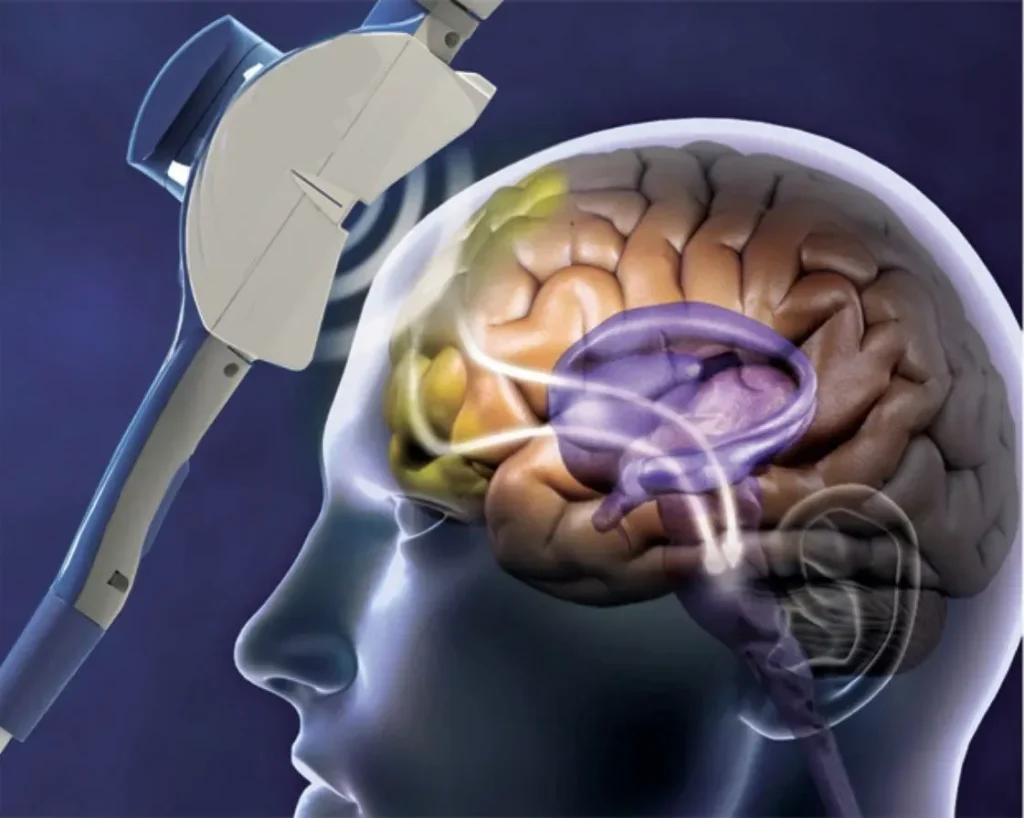Table of Contents
Transcranial Magnetic Stimulation (TMS) therapy is a non-invasive method used to stimulate small regions of the brain. This technique involves the use of electromagnetic fields to induce electric currents in the brain, which can help modulate neural activity. TMS therapy has gained considerable attention in the field of neuroscience and psychiatry, particularly for its applications in treating depression and other neurological disorders.
How TMS Therapy Works
Basic Principles
TMS operates on the principle of electromagnetic induction. A magnetic coil, placed against the scalp, generates a magnetic field that passes through the skull and induces an electrical current in the targeted brain region. This current can activate neurons, influencing their activity and connectivity.
Procedure
The procedure is typically conducted in a clinical setting. The patient sits in a comfortable chair while the technician positions the coil against their head. A series of magnetic pulses are delivered, usually lasting between 20 to 40 minutes per session. The exact location and intensity of the stimulation are determined based on the condition being treated and the patient’s specific needs.
Applications of TMS Therapy
Major Depressive Disorder (MDD)
One of the most well-known applications of TMS is in the treatment of Major Depressive Disorder (MDD), particularly in patients who have not responded to traditional antidepressant medications. Studies have shown that TMS can significantly reduce symptoms of depression, offering a new avenue of hope for those who struggle with this debilitating condition.
Anxiety Disorders
Research is also exploring the effectiveness of TMS in treating anxiety disorders. While still in the early stages, preliminary results suggest that TMS can help alleviate symptoms of generalized anxiety disorder (GAD) and post-traumatic stress disorder (PTSD), potentially providing a non-pharmacological treatment option for these conditions.
Neurological Conditions
Beyond psychiatric applications, TMS is being investigated for its potential in treating various neurological conditions. This includes stroke rehabilitation, where TMS may help improve motor function, and chronic pain management, where it may alter pain perception and provide relief.
Advantages of TMS Therapy
Non-Invasive Nature
One of the primary advantages of TMS therapy is that it is non-invasive. Unlike surgical interventions, TMS does not require any incisions or implantation of devices, reducing the risk of complications and the need for recovery time.
Minimal Side Effects
TMS therapy is generally well-tolerated, with minimal side effects. The most common side effects include mild scalp discomfort or headache during or after the session, which usually resolves quickly. Unlike systemic medications, TMS does not have widespread physiological effects, making it a preferable option for patients concerned about drug interactions or side effects.
Targeted Treatment
TMS allows for precise targeting of specific brain regions. This precision enhances the effectiveness of the treatment while minimizing unintended effects on other parts of the brain. As a result, TMS can be customized to the individual needs of each patient.
Challenges and Considerations
Accessibility and Cost
Despite its advantages, TMS therapy is not universally accessible. The cost of the equipment and the need for trained professionals to administer the therapy can make it expensive. Additionally, insurance coverage for TMS varies, potentially limiting access for some patients.
Variable Response Rates
Not all patients respond to TMS therapy, and the reasons for this variability are not yet fully understood. Research is ongoing to identify biomarkers or predictors of response, which could help tailor treatment to those most likely to benefit.
Long-Term Effects
While TMS has been shown to be effective in the short to medium term, the long-term effects and durability of treatment benefits are still being studied. Ongoing research is needed to determine how best to sustain improvements and whether maintenance sessions might be necessary.
Conclusion
Transcranial Magnetic Stimulation (TMS) therapy represents a promising advancement in the treatment of various psychiatric and neurological conditions. Its non-invasive nature, minimal side effects, and targeted approach make it an attractive alternative to traditional treatments. However, challenges such as accessibility, cost, and variable response rates must be addressed to fully realize its potential. As research continues to evolve, TMS may become an increasingly important tool in the arsenal of modern medicine.
For More Information Please Visit These Websites Viprow And Vecteezy

